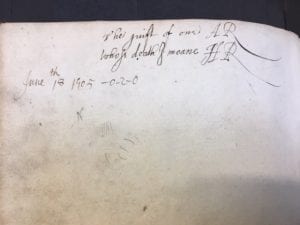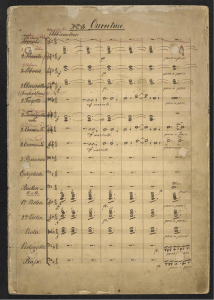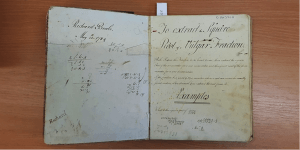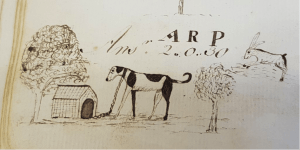[Last modified: March, 19 2019 11:31 AM]
After life and remembering doesn’t concern only pharaohs and powerful people. Nowadays, a lot of objects are transmitted from generations to generations and allow us to remember and better understand our ancestors, as well as people who left us. This section focuses on handwritten inscriptions in books and scores as a modern way of remembering.
Books are traditionally closely related to death because they are transmitted to someone else when the previous owner dies. Handwritten inscriptions often show this transmission. The history of the book Amorum Emblemata might be the story of successive deaths. The 17th century book is full of handwritten inscriptions showing that the book was used as a family dictionary and transmitted from generations to generations. The handwritten poem on the title page is very revealing: “The gift of one whose death I moaned.” We don’t know who could have written these verses but it demonstrates that the book is a way to remember the previous owner. Moreover, the book gathers inscriptions from very famous people as well as from totally unknown people. And it is actually the unknown people that are the most remembered. In the right part of the title page, there are some inscriptions by the famous play writer Ben Jonson. The inscriptions have been crossed out, but we don’t know by whom. We can still read “Sum Ben Jonson Liber” meaning I am Ben Jonson’s book. It demonstrates to what extent books are an important part of our lives.
Inscriptions are also crucial to understand artists’ intentions. Inscriptions upon texts and musical scores give precious information and hence allow us to be right in the interpretation of a work of art after the artist’s death, which can be very challenging. The exhibition presents the score of Richard Wagner’s “The Flying Dutchman (Der Fliegende Holländer)” annotated by the composer. The annotations (written with red ink) give us important information about the orchestration and musical intentions, as well as the staging and global understanding of opera. The inscriptions are crucial to continue Wagner’s project and are the basis of his timeless music. Playing Wagner is the best way to remember his genius and handwritten annotations are very important to remember him in the right way.
Remembering through inscriptions concerns everyone. Children are also involved, as demonstrated by the mathematics book owned by someone called Richard Beale, who was 13 years old in 1784. The drawings and inscriptions inside the book are a wonderful way to remember this child, who would have stayed completely unknown otherwise. The boy described all his life and drew animals and landscapes. Richard Beale inscriptions are really important because they transmit Richard’s personality. His experience of the 18th century life is made flesh and blood through the drawings. The Museum of English Rural Life found the book in a farm in Biddenden, Kent, and reconstructed the scenes drawn by Richard, like a chicken wearing trousers.
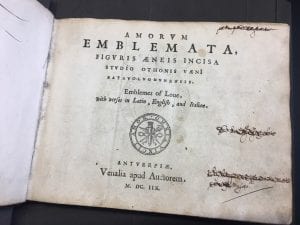
© Lucie Grange Francois
© Lucie Grange Francois
Amorum Emblemata (1608), a book in Latin, English and Italian, written by Otto Van Veen in Antwerp (Netherlands). The book once belonged to Ben Jonson (1572-1637). 247 pages, 16 x 20 cm, UCL Special Collections
© British Library
“Overture” of Richard Wagner’s Der Fliegende Holländer (The flying Dutchman) annotated by the composer with red ink. The opera was premiered in 1843. British Library Music collections
© Museum of English Rural Life
© Museum of English Rural Life
Richard Beale’s mathematics book (1781) from a farm in Biddenden, Kent. Museum of English Rural life, 15 x 20 cm
